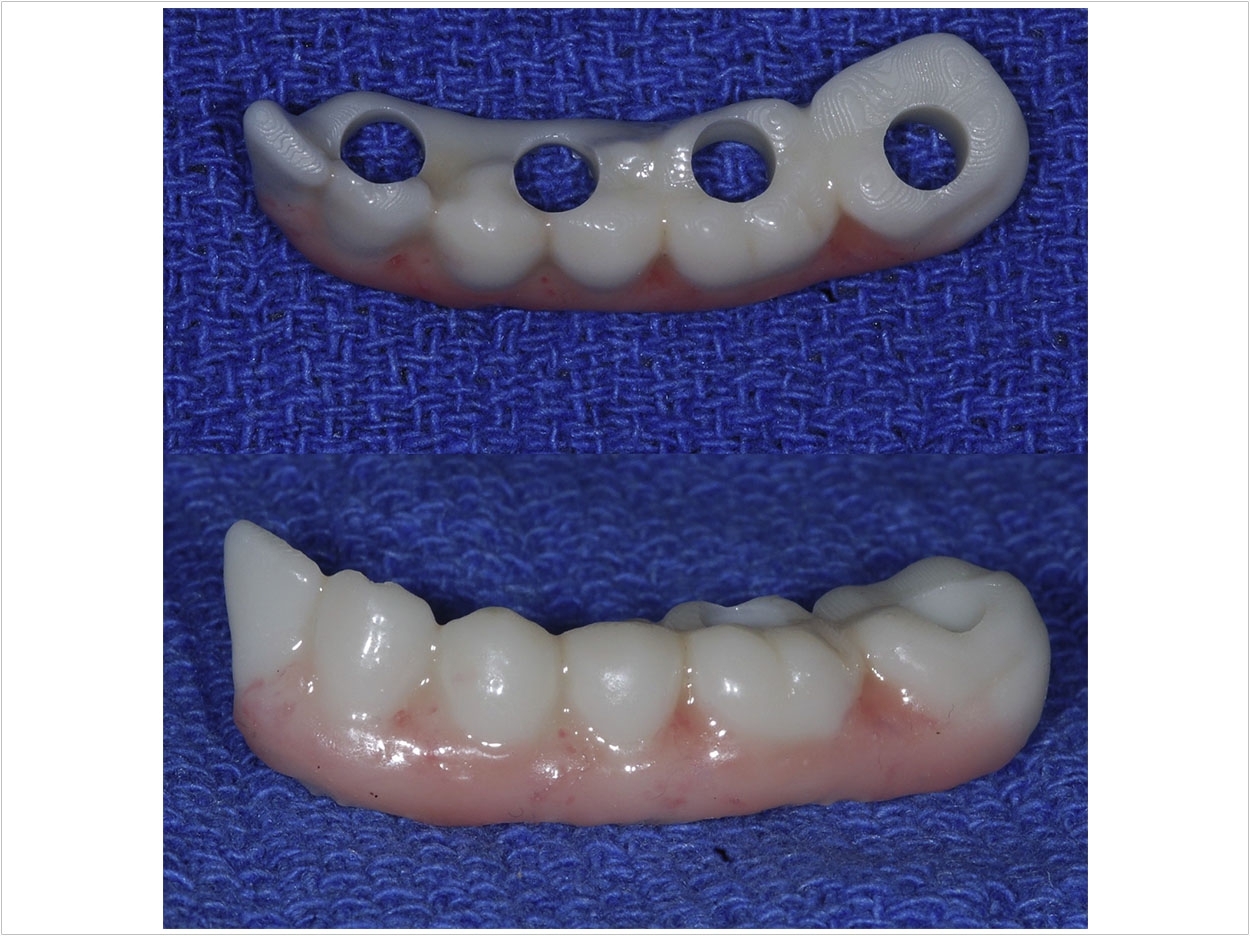
In-house 3-D printing allows patients with malignant disease to more quickly receive immediate tooth restoration—treatment that had been regarded as of low importance for these patients due to the severity of their disease, according to a team of oral surgeons at the John Peter Smith Health Network in Fort Worth, Texas.
The 3-D digital workflow eliminates the wait in providing replacement teeth using the conventional approach and is less costly, report the surgeons. Their study examined 12 patients who underwent virtual surgical planning (VSP) for free fibula maxillofacial reconstruction, which replaces bone and soft tissues in the face removed to treat cancer with bone and soft tissue from the patient’s leg.
A dental prosthesis was created for each patient to be placed at reconstruction. For five patients, a dental laboratory made the prosthesis. For the other patients, a surgeon designed the prostheses and 3-D printed them in-house. Four of the patients who received a prosthesis from the in-house 3-D printing had malignant tumors.
The researchers found that developing the prostheses in-house required less time and cost less than using a dental laboratory. Sending production of a prosthesis to dental laboratories leads to delays in the prosthesis being ready to give to the patient soon after cancer surgery, the surgeons said.
These delays limited the usefulness of the treatment to benign conditions, the surgeons added. But with point-of-care 3-D printing, they said, they were able to fabricate a dental prosthesis within 24 hours of the VSP session, which eliminated any additional waiting period before surgery.
For the in-house printing, the surgeon received digital files immediately after the VSP session. Within a day, the prosthesis was 3-D printed. The in-house prostheses were prepared for surgery one to two weeks before a plate and models from VSP arrived, so treatment was not delayed more than the standard duration for acquiring the plate and models from the vendor, according to the surgeons.
By comparison, the offsite dental laboratory needed an additional two weeks to create the prostheses. On average, the prostheses created at the offsite dental laboratory cost $617 compared to $8.34 for resin for the in-house 3-D prosthesis. However, the surgeons noted that costs were associated with obtaining a 3-D printer and supplies, which were less than $3,000.
The study did not compare prosthesis quality between the two settings. However, the surgeons said that they anticipate that point-of-care 30D printing will become a viable solution for many patients as it becomes available to more surgeons.
The study, “Immediate Teeth in Fibulas: Planning and Digital Workflow With Point-of-Care 3D Printing,” was published by the Journal of Oral and Maxillofacial Surgery.
Related Articles
Survival Rates Decline Each Year Gum Cancer Isn’t Diagnosed
MMA Surgery Improves Long-Term Quality of Life for Apnea Patients
Resins Expand Library of Materials for 3-D Printing


